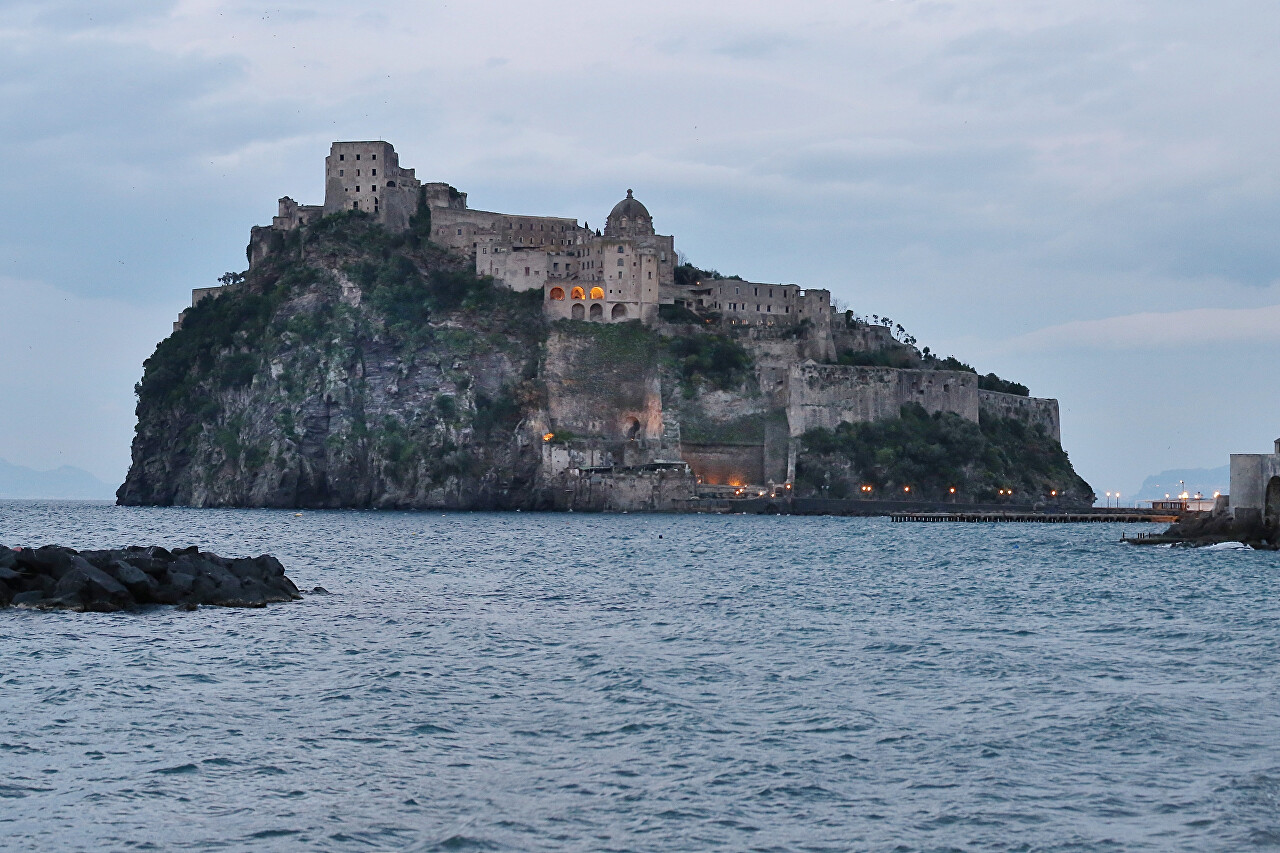History of the Aragonese Castle
As historians have established, the first fortification on the rock near the island of Ischia appeared in 474 BC. A small fortress was built by the tyrant of Syracuse (in ancient Greece, the so-called rulers who came to power by force) Geronom I and bore his name - "Castrum Gerones".
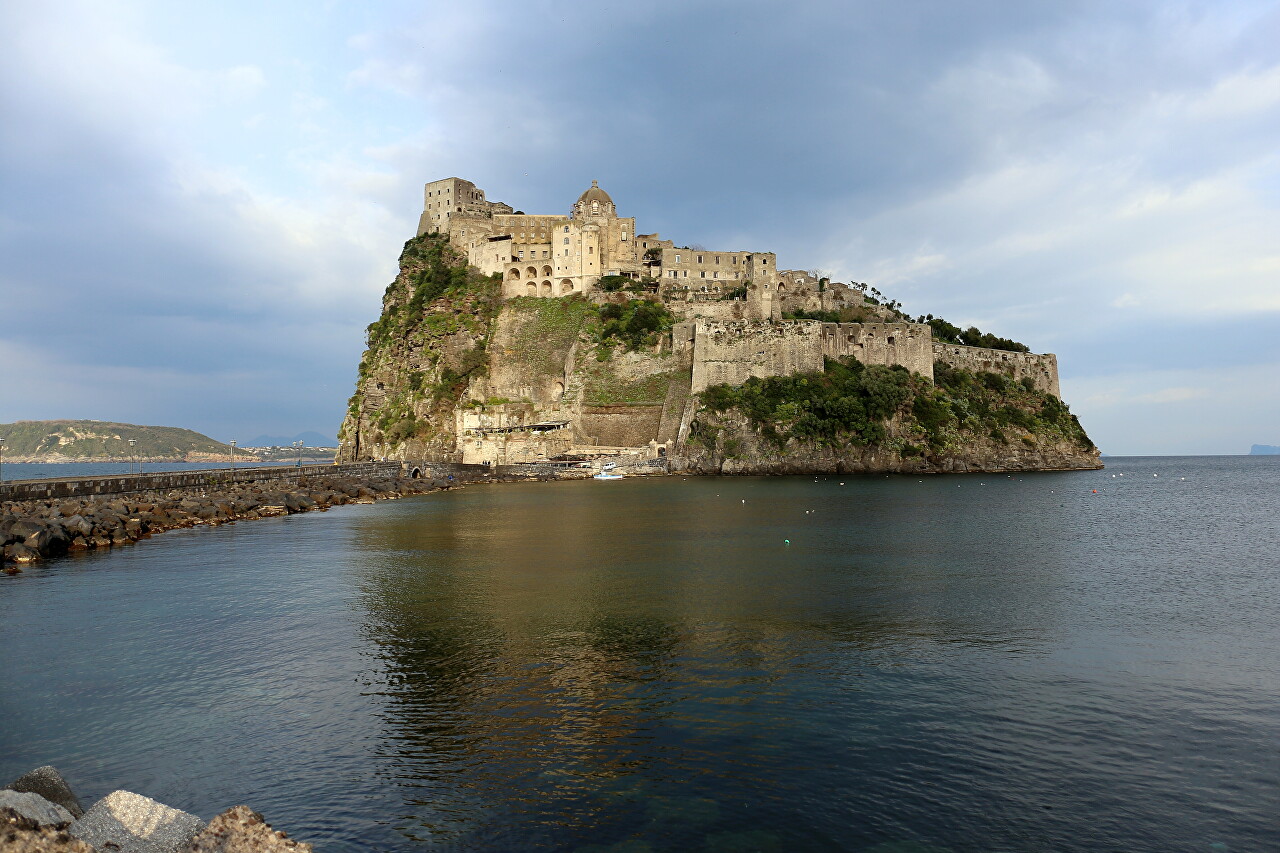
Heron provided support for the Greek colony of Kuma, which was located on the site of the current districts of Naples Bacoli and Pozzouli. The Greeks were at war with the Etruscans, the Syracusan fleet drove the Etruscan ships out of the bay of Lacco Ameno, and Heron received the entire island of Ischia, which belonged to Cumae, as a token of gratitude. Syrause had neither the means nor the great desire to develop the island, and very soon it came under the control of the Greek city of Parthenope, the forerunner of present-day Naples.
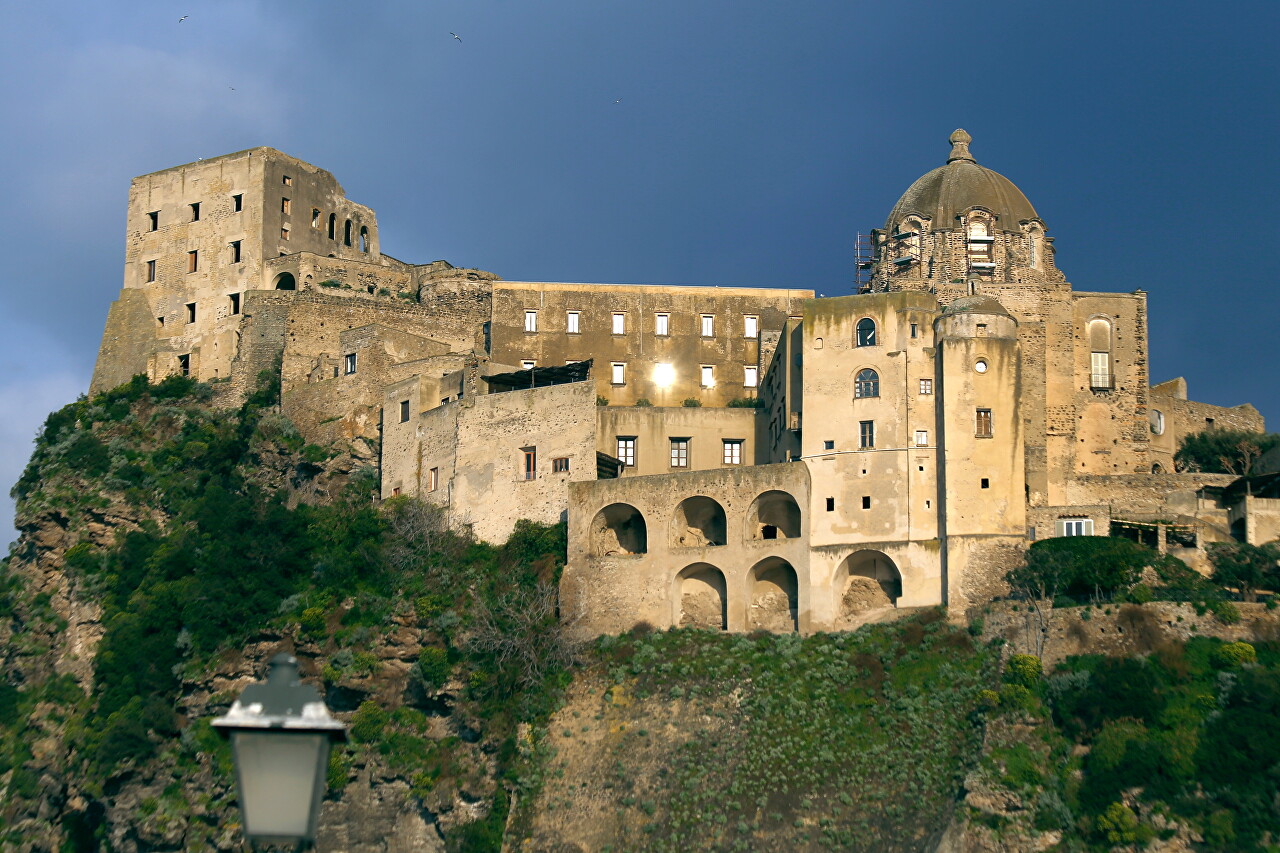
In 315 BC, the Greeks were pushed aside by the Romans, who founded the colony of Aenaria on the island. The Romans built several new towers in the fortress, which they used to control the movement of ships in the bay. Under the protection of the fortress, farmers and fishermen began to settle in what is now Ischia Ponte and Carta Romana. After the collapse of the Roman Empire, in the 12th century, the island became an object of plunder both for European barbarians-Visigoths, Vandals and Normans, and for African pirates, in the next century the Swabians, then the Angevins, attacked the island. During this period, the well-fortified rock became a refuge for the local population during the raids. Access to the castle was only possible by a small staircase on a steep slope overlooking the island of Vivara.
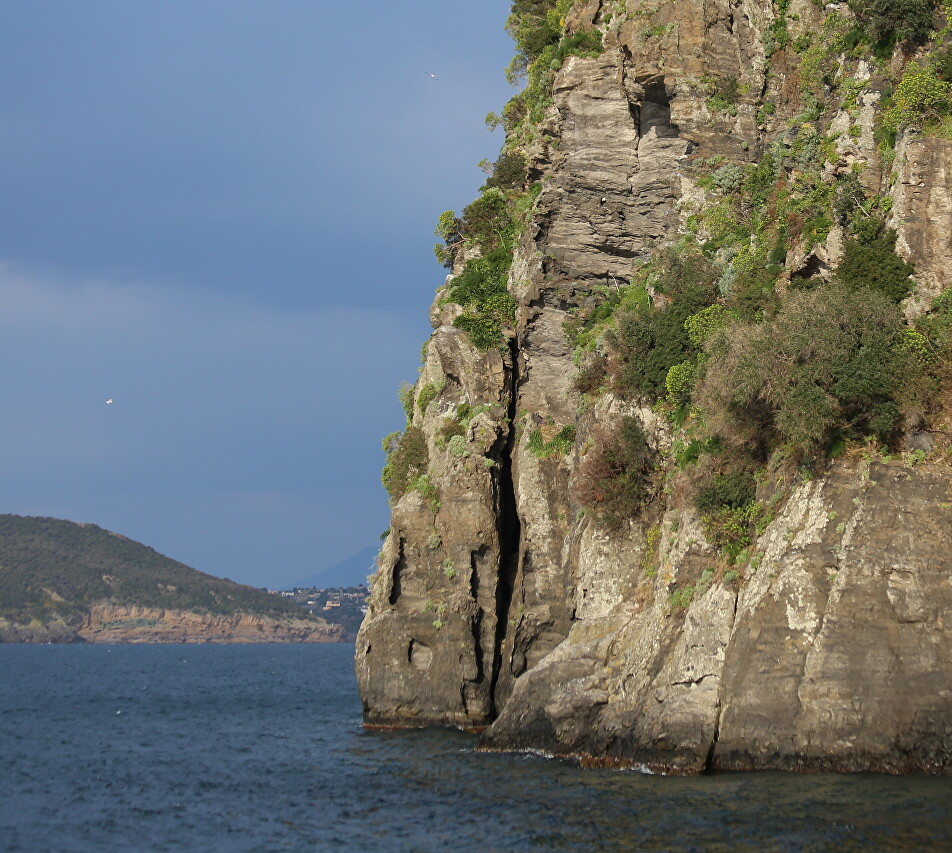
The eruption of the Arso volcano in 1301 flooded the town of Geronda (on the site of the present village of Fiaiano) with lava and its inhabitants moved to the cliff, where it was safer, and soon houses and plantations appeared around the fortress.
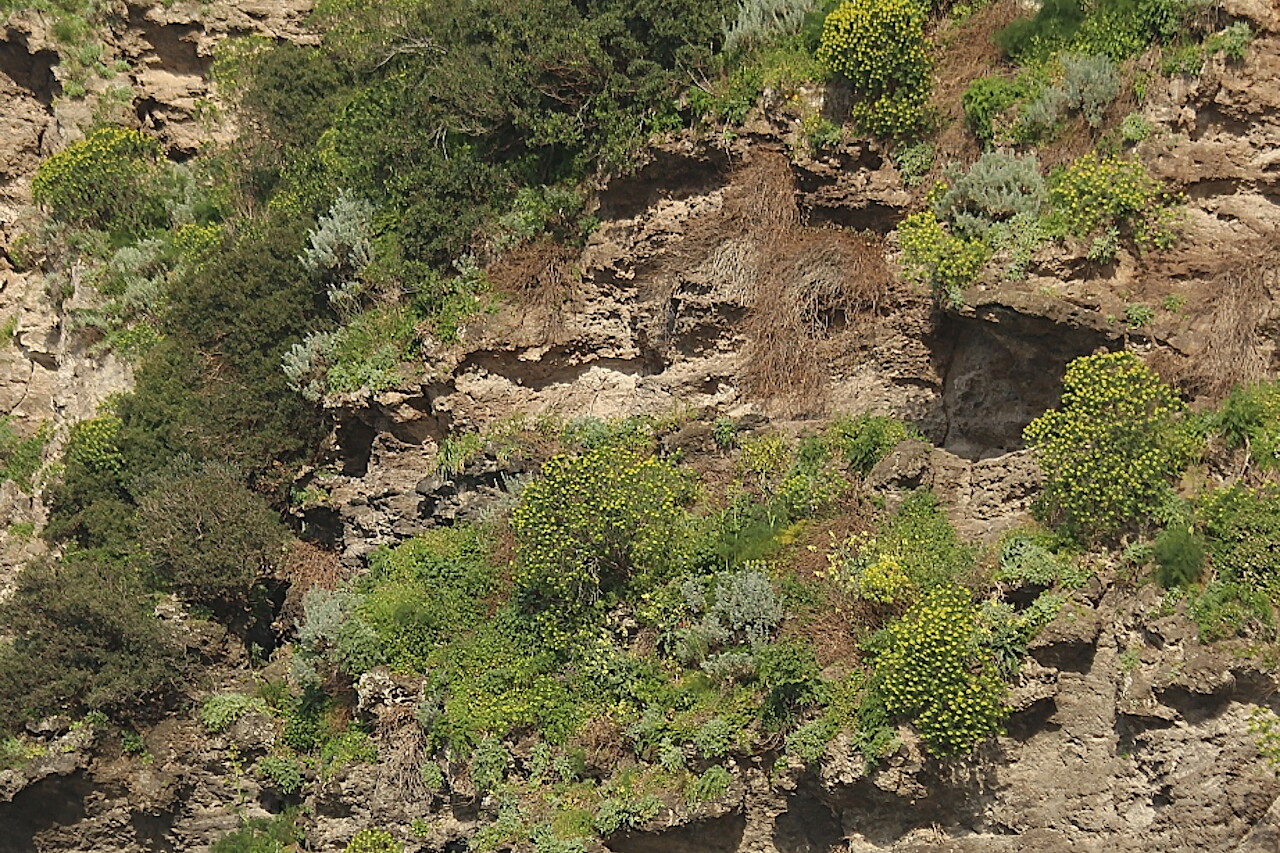
The modern look of the castle was received during the reign of the Angevin dynasty. In 1441, King Alfonso V of Aragon of Naples began a major fortification of the island, resulting in not only the Aragonese Castle, but also many watchtowers in other parts of the island. The castle received massive walls around the perimeter, which made the rock completely impregnable. In those days, the population often suffered from attacks by Arab pirates-Saracens, during their raids in the castle, almost the entire population of the island took refuge. At the same time, the island was connected to the coast - first by a wooden bridge, then it was replaced by a stone dam. At the entrance to the castle, the causeway ended with a drawbridge that cut off the island from the shore in case of danger.
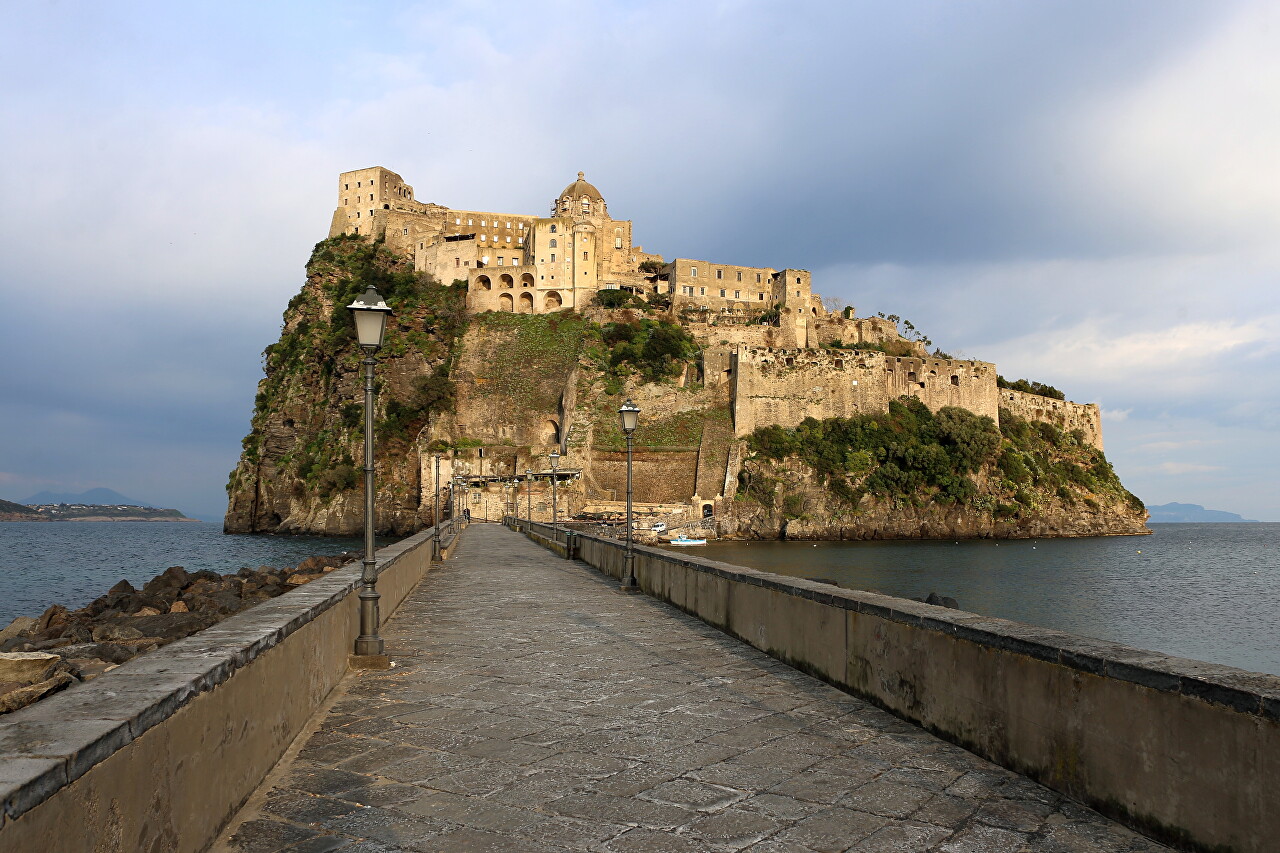
Behind the bridge is a well-fortified entrance to the fortress, where the guard and the commandant's office of the fortress were located. A passageway cut through the rock led up.
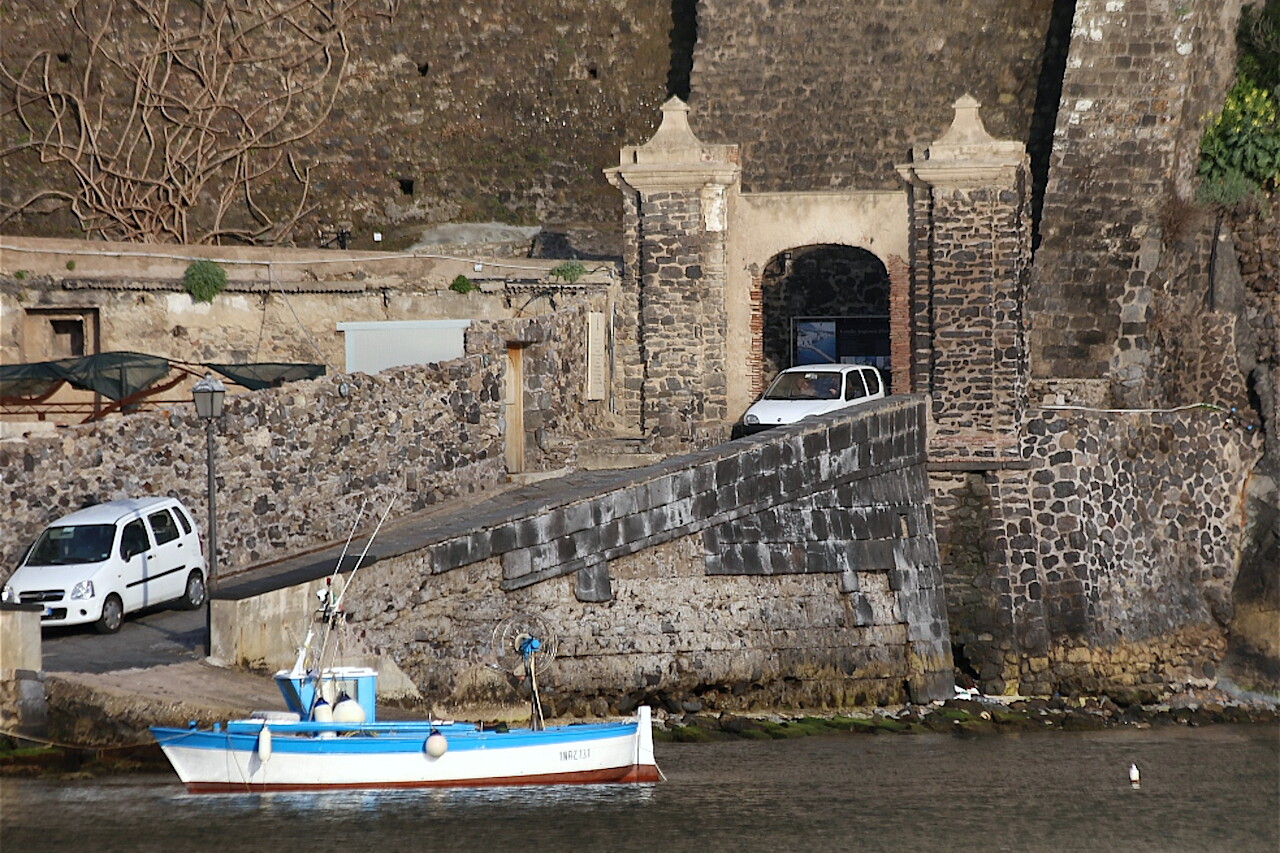
The greatest flourishing of the castle occurred in the 16th century, when 1892 families lived on the island, it was a whole city, with residential buildings and farmland. On the rock there was the bishopric of Ischia, 13 churches, the monastery of the Clarissines, the Basilian abbey, and the seminary.
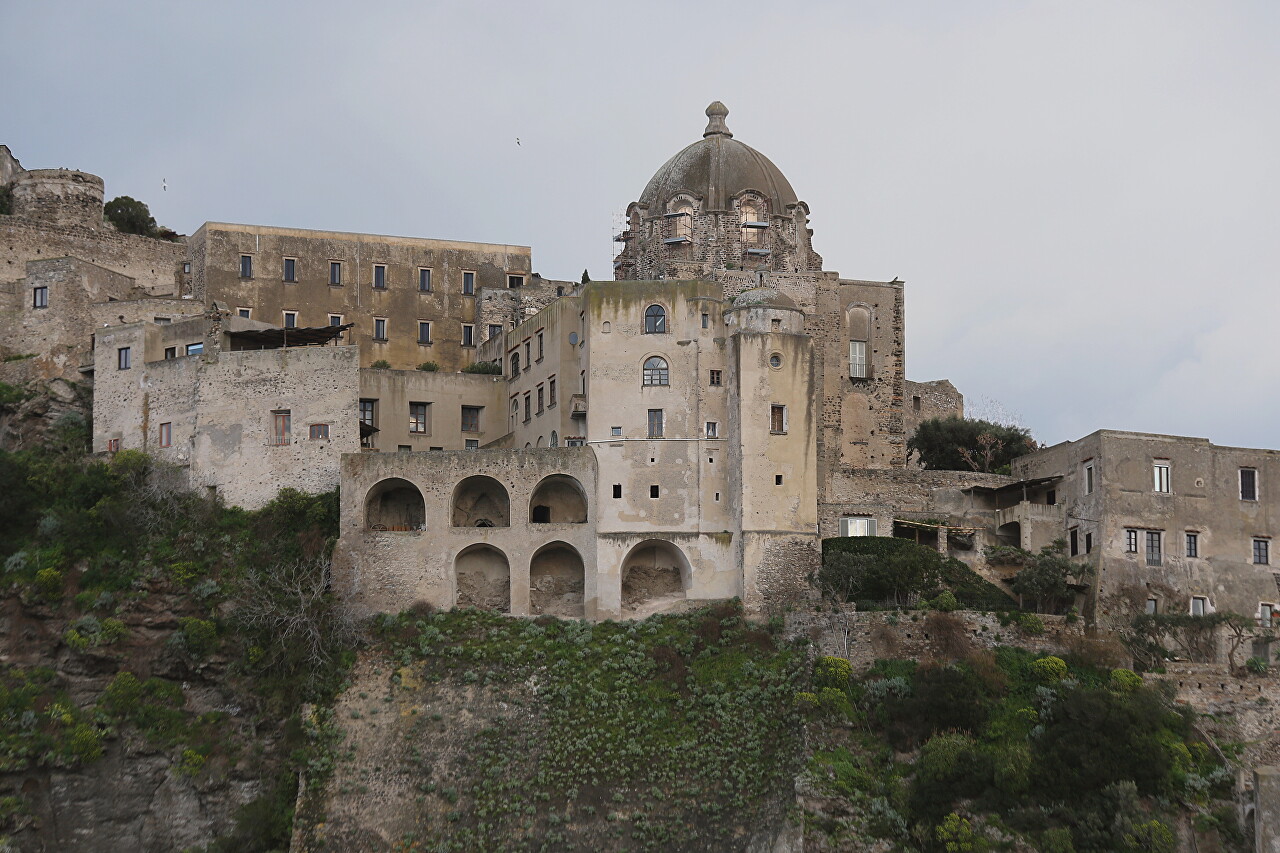
The castle became one of the cultural centers of Italy, which it turned into Vittoria Colonna, a famous poet of the Renaissance. In 1509, Vittoria married Ferrante d'Avalos, the son of the island's governor and a friend of her father, the Aragonese General Fabrizio Colonna. Vittoria was visited by the best writers and artists of the era, including Ariosto, Sannadoro, Pontano, Michelangelo and many others.

In the second half of the eighteenth century, pirate raids stopped and residents began to leave the castle, as the limited territory did not allow farming. In 1809, the island was besieged by an English squadron allied to Napoleon. The garrison refused to surrender, and the fortress was shelled by artillery. As a result, the cathedral and many other buildings were completely destroyed. After the restoration of Bourbon rule, only about 30 inhabitants remained on the island.
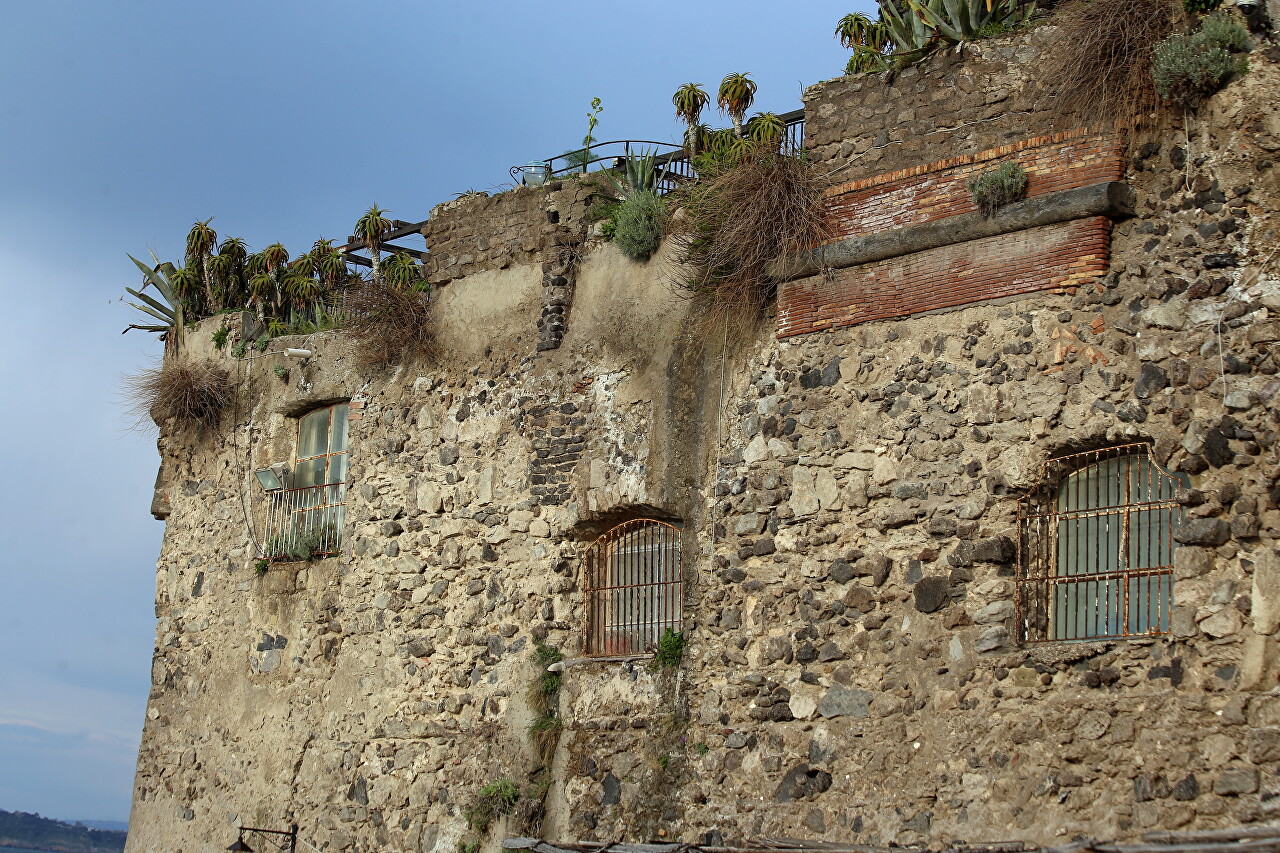
In 1823, King Ferdinand IV of Sicily built a prison out of the fortress for participants of the Risorgimento (Ital. risorgimento - rebirth), a national liberation movement that fought against foreign domination and for the unification of Italy into a single state. In 1860, the Kingdom of Sicily fell to the onslaught of Giuseppe Garibaldi's troops and the prison in the Aragonese Castle was liquidated.
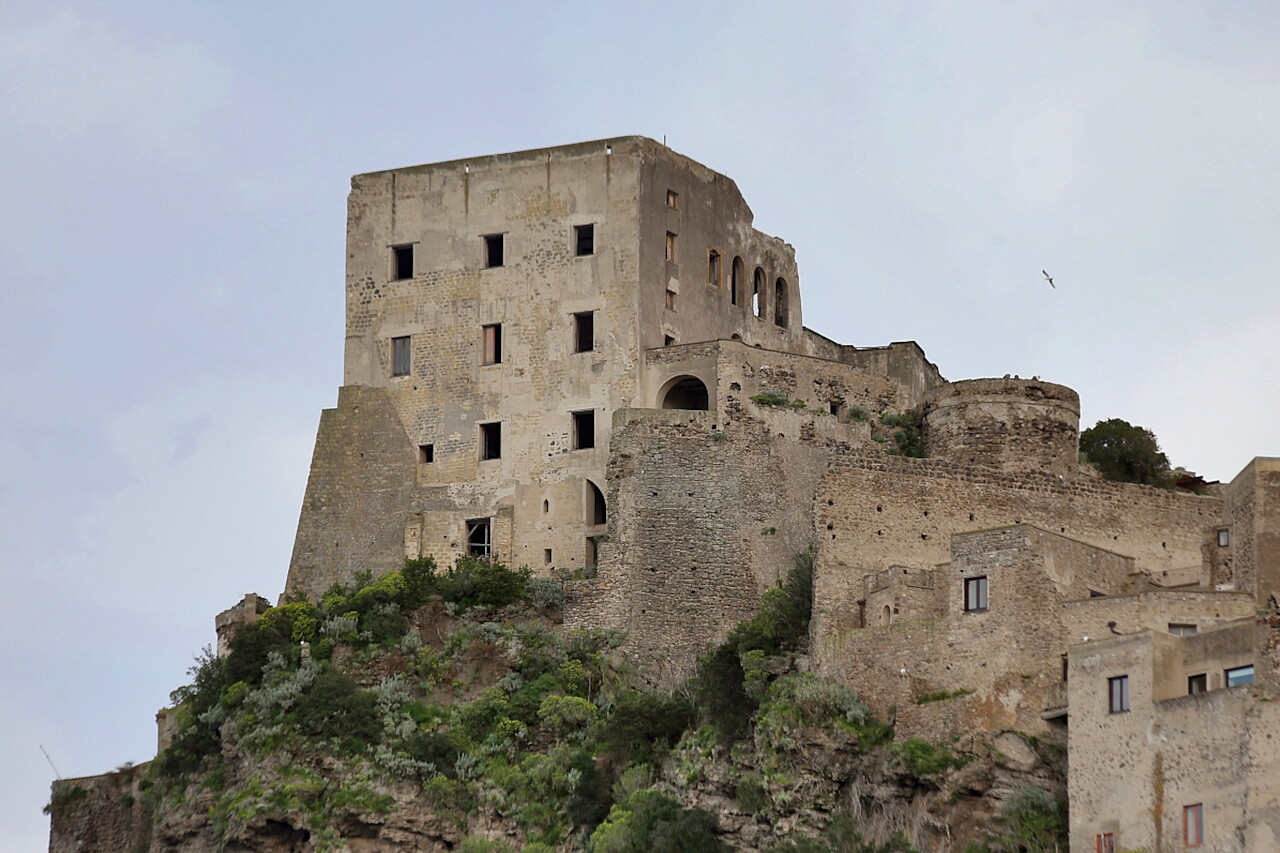
In 1912, the State Property Administration put the island up for auction and the castle was sold to a private owner. The new owners rebuilt the bastions as the Albergo Il Monastero hotel and improved the grounds, making the castle the main attraction of Ischia.
